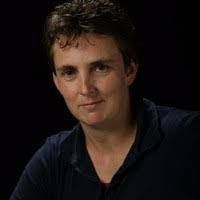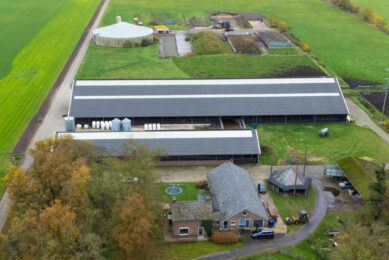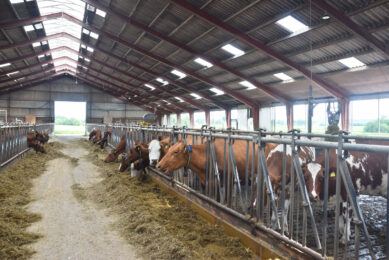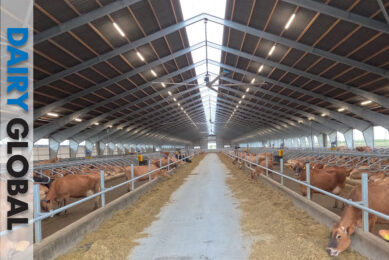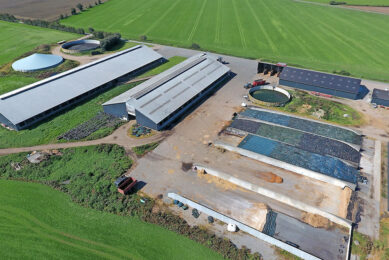Labour-friendly hoof care for dairy cattle
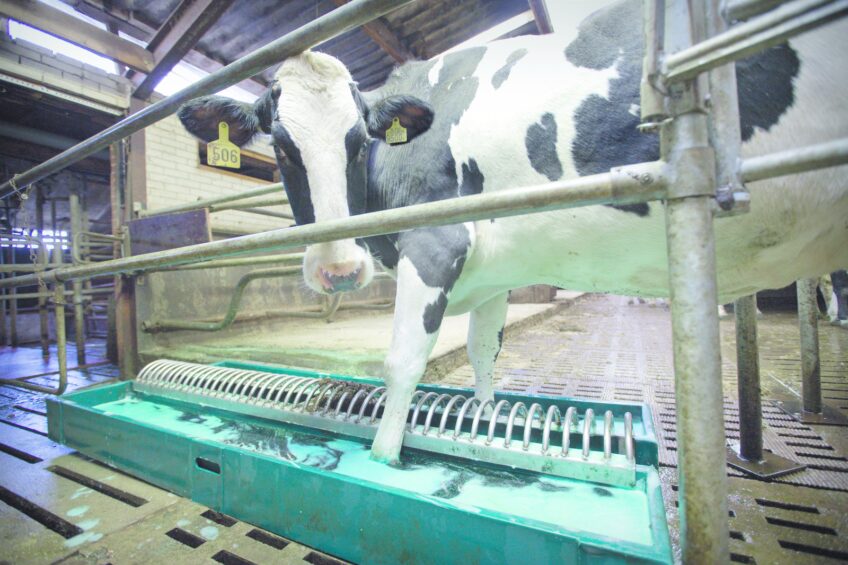
A preventive foot bath is often perceived as arduous and labour intensive. An automatic system enables lighter work, but is much more expensive.
Use of a periodical foot bath is often regarded as inconvenient and time consuming. That is primarily due to the fact that the traditional foot bath needs to be filled and emptied manually. On top of that the – still widely used – formalin is an irritant.
Due to the current size of the farms a significant proportion of the cows walks through a fouled bath. When it is not the dirty hoofs the cows enter the bath with, it is the manure of a number of cows transforming the bath into a source of infection within no time. This is avoided by intermediate changing of the water, although this barely ever happens as it is a difficult and laborious job. Foot baths also cause delays in the milking parlour. When a milking robot is used a footbath may be practically possible.
Automatic refilling hoof baths
Giving the herd proper hoof care, without the cumbersome task of managing the foot baths, is a possibility. There are plenty of automatic hoof baths and cleaning systems a farmer can choose from. The main obstacle is unfamiliarity and the price. A simple plastic walk-through unit costs € 300 at most, basic automatic systems cost tenfold. The fact that such a unit significantly relieves the burden, in most cases does not outweigh its price. A system which offers each cow a clean bath or sprays every hoof clean, reduces infection levels and lowers the risk of mortellaro. The supply of hoof baths is divided into baths – self-cleansing or not -, hoof wash baths and spray systems.
The claw spray mat becomes operational as soon as a cow steps on it. The hoof is sprayed from below.
Photo:
Hans Prinsen
A gate forces cows to stand still above the Spraycare system.
Photo:
Anne van der Woude
When a simple walk-through bath is used it is entirely utopian to think each cow passing through gets an effective bath. A very simple solution is placing two baths in a row: one filled with clean water to soak the dirt of the hoofs, the second with the desired disinfectant. An advantage here is that in principle less disinfectant is needed as it will take more time for the disinfecting bath to get dirty and more cows can pass through. The costs related to traditional baths can amount to € 600, the downside is both heavy, unruly baths must be regularly tipped over.
Suppliers of hoof baths responded to this with automatic, refilling baths. These are emptied via a plug or are automatically tipped over based on a cow counter or a timer. There is no need for users to fear waiting periods for cows, as a refill happens rapidly, both via the water system and via reservoirs; refilling only takes a few minutes. Desired chemicals are automatically added.
Washing station for thorough hoof cleaning
The washing station is a walk-through unit in which hoofs are sprayed clean with just water, a system with a proven track record of improving hoof health. In Denmark these systems have been studied in detail. Cleaning with water alone turned out to be really beneficial for hoof health. As the dirt is removed off the hoof, the anaerobic environment in which mortellaro can easily develop and spreads, is eliminated.
The Claw Clean System sprays the hoof in passing. Fences guide the cow to make sure the jet hits the hoof well.
Photo:
JOZ
For the AFB1000 the floor must have a slight downward slope. If necessary a frame is supplied.
Photo:
Delaval
When it comes to the throughput out of the milking parlour or robot, washing stations have a significant advantage over walk-through baths. Cows don’t like entering a water bath, a barrier they don’t have to cross in the washing station. The jet should hit the hoof with accuracy to have the desired effect. The water in the washing station is reused. Filth is filtered out and a possible cleaning or disinfecting solution is supplemented when necessary. This results in less use of water in total.
Hoof spray must be accurate
A system which is not yet commonly applied, is spraying a disinfectant directly at the hooves. This can be done by a spray nozzle on the ground or by a mat with nozzles the cow can walk over. Particularly advantageous in these systems is that the cows keep moving at a steady pace and the system can permanently stay in place. The focal point for the farmer is how to prevent the nozzles from clogging up. It is also important to adjust the system in such a manner as to sufficiently hit the hoofs. Some suppliers came up with a technical solution to guarantee the solution will hit the hoofs. The DeLaval’s Spraycare system and JOZ’s Claw Clean System are placed in the alley between milking parlour and barn. A gate forces the cow to stand still for a moment while the hoofs are sprayed. Aided by a sensor the solution is sprayed at the hoofs. The claw spray mat of the Dutch supplier Vink is a 1.80 to 2.00 meter long mat with nozzles, to ensure that each claw is sprayed several times.
USA Equipment


